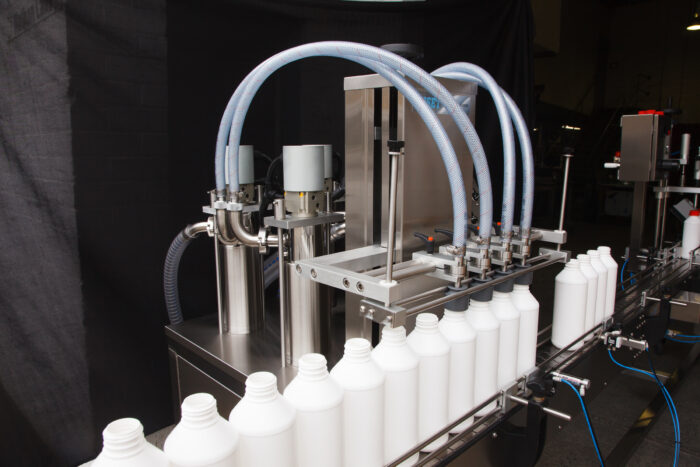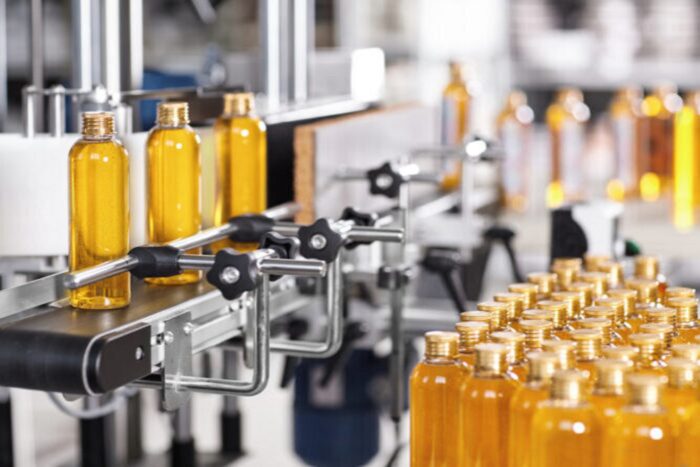Crucial to improved efficiency and cost-effective production across industries, increased global demand for liquid filling machines has resulted in a projected compound annual growth rate of 4.9% – reaching $6.89 billion in 2021. However, keeping on top of liquid filling machine maintenance and cleaning is vital to satisfy all your industry’s regulatory and hygiene practices. You will also extend the life and performance of your machine investment – either purchased outright or on hire. Follow these tips on key cleaning and sanitisation when performing routine maintenance to keep your systems running clean and mean!
Different Systems, Different Approaches Work Best
It’s crucial your business has a well-defined and documented maintenance program and skilled staff to understand each type of machine. For example, cleaning requirements for linear and rotary liquid filling machines will differ.
Liquid filling machine types are made of stainless steel and use additional fixtures and valves made of rubber or piping, which provide a high level of performance and sanitation. You can still use certain cleaning agents to properly sanitise inner components, but make sure you’re aware of any warnings in terms of degradation or unsuitability for use. This is especially relevant in pharmaceutical and industrial cleaning applications with unstable liquid product mixes.
It’s also important to take into consideration rubber or other components that may be sensitive to harsher chemical cleaners which are applied using clean in place systems. Check all technical specs and safety precautions when setting up a cleaning cycle, either manually or on an automatic control panel setting, to extend the life of your machinery and prevent product breakdowns.
Automatic Filling Machiness
Just as liquid filling machines work differently based on the product used, cleaning processes will also be adapted. Clean in place systems on automatic filing machines will typically use water flushes or cleaning liquid rinses to prevent product caking, contamination and buildup. This is especially important in multi-product line businesses where higher production output is necessary. Flushing and cleaning supply lines can also be controlled by an operator with minimal downtime in production The operator just sets up the timers and cycles on the control panel while data on machine performance can be monitored to offset downtime.
Manual cleaning of separate components, hoses, nozzle and drip trays can be done by staff while a cleaning cycle is running automatically. Keep hoses and attachments coiled rather than dropped on flooring to assist drainage and reduce excess product caking. This also reduces operator handling of the components which can lead to cross-contamination. If you are changing production lines, the filling lines and heads may need manual disassembly to aid in flushing and cleaning supply lines.
Manual or Semi-Automatic Filling Machines
If you are a small manufacturer using a bench-style manual or linear filling machine, make sure the handle is sanitised routinely, even if on a single product line. Same as in gravity filling machines, make sure the valve under the filling head is free of buildup, caking and excess product after filling – a routine sanitisation clean will extend its life and prevent production loss stemming from hygiene failures.
Watch out For Waste: Clean Up Your Process Checks

A manual cleaning process follows standard operating procedures focusing on sanitation and routine maintenance checks performed by skilled operators. It’s easy to see where blockages, cleaning updates and service maintenance may be required. For businesses where multiple production lines use liquid filling machines, clean in place systems rely more on automation to achieve standard hygiene and sanitation levels. So it’s wise to keep these process checks in mind:
- Long delivery lines between manufacturing and filling areas can lead to contamination. Keep production facilities shorter to avoid cross-contamination and make sure to have hard pipes not flexible hoses that can coil and prevent adequate drainage during cleaning.
- Raw material supply tanks for products in food and beverage, health and beauty and industrial cleaning industries should be monitored by a skilled workforce for batch requirements when in production. Filling machines operate on consistent transfer of material but towards the end of a raw materials batch, inconsistencies with product elements and distribution can affect sanitation.
- Volumetric or piston filling machines have precise machine parts used in the filing process that require regular cleaning processes through the pistons to prevent blockages and bacteria contamination.
- Sanitisation is extremely important for certain industrial sectors after the increased focus on hygiene seen from the COVID-19 pandemic. Some production lines will require tanks with sealed lids or tops rather than loose lids to avoid degradation while being filled and others may have issues with viscosity as the raw materials are agitated during filling.
- If you are producing suspensions, keep your machinery discharge valves flush with tank bottoms to avoid pooling of undissolved drug or emulsion suspensions. Store all transfer lines such as pipes and hoses when not in production up and off the factory floor to stop microbial cross-contamination.
It’s Crucial to Clean it Right
Cleaning routines that are well established and follow industry standards prevent costly breakdowns and maintenance bills. This is across all aspects of the production line – including integrated machines and systems. For example, capping machines can have several business advantages when integrated into the liquid filling process. Not only does this result in quicker and more efficient filling, but the automated capping increases speed and reduces errors in production. This level of automation can also prevent blockages and bacteria contamination, which is important to maintain hygiene and safety standards.
An important tool-in-trade for all sized businesses is to ensure up to date training of skilled staff on cleaning processes. It’s not enough to know how the machine works, operators need to understand why each element is used and why specific hygiene levels are required for your production runs. This allows staff to recognise any glitches with product filling or parts manufacture early – saving you production downtime. If you also review your standard operating procedures regularly, then problems with less-than-satisfactory sanitisation standards are reduced and machine cleaning downtime is less of an issue after production runs finish.
Asset Packaging Machines Can Assist With Routine Maintenance
Finally, for those starting out on their liquid filling packaging journey who may need to get up to speed on the operating and cleaning procedures, these machines require to keep your output and reputation in tip-top shape. Why not consider hiring a specific model of machine to test out its capacity and cleaning run is best suited to your production needs? Asset Packaging Machines can assist you with routine maintenance, part replacement and servicing requirements plus we offer the opportunity to hire several of our liquid filling machine models for your specific needs.













